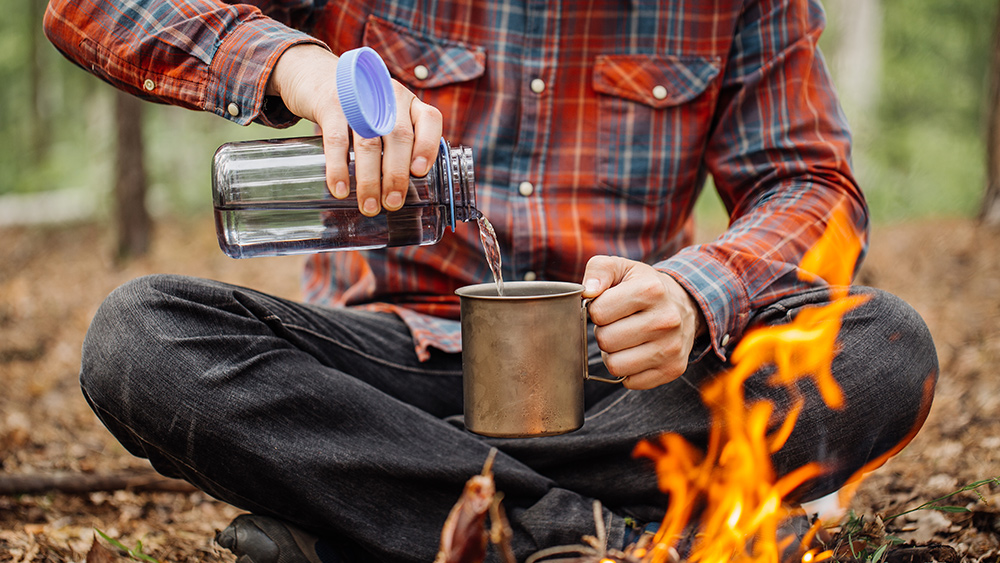5 Survival myths that can get you killed and what to do instead
02/26/2024 / By Olivia Cook

Here are five survival myths that can get you killed and what you should do to survive.
Myth: Rubbing a body part affected with frostbite will accelerate its thawing
If you ever find yourself stuck outside in a very cold climate, one of the biggest risks to your safety is frostbite – an injury caused by the freezing of your skin and its underlying tissues. It starts like a painful, red patch, cold skin and a prickling feeling – referred to as “frostnip.”
If left untreated, this condition will progress and your skin will stiffen, feel numb or swell and go a sickly gray color. In the very worst of cases, it can lead to tissue necrosis or death, which cannot be reversed.
Despite your first instinct, never rub anywhere you suspect might be catching frostbite because this will only make things a lot worse by causing more tissue damage. It needs to be treated gently and given the chance to heal.
According to the American Red Cross, the best approach is to get out of the cold, find shelter and submerge any affected areas in warm water until the skin regains its normal color and loses its numbness. Drink warm (not hot) liquids to take the chill off and warm yourself up gently.
For the face or ears, apply a warm, wet washcloth and do not rewarm frostbitten skin with direct heat, like a fire/fireplace, heat lamp, heating pad or staying close to a burning stove, to avoid burns.
Don’t stay out in the cold. Your priority should be finding some shelter. Otherwise, no matter what you do, your skin will just refreeze.
Myth: Building a fire is a priority over shelter if you’re lost and alone in the wilderness
Shelter is much more important to protect you from the elements. (Related: How to build a fire in a winter survival situation.)
Rick Boone, who teaches Survival & Disaster Preparedness Skills courses, says your survival priorities typically should be in this order: shelter, water, fire and food. However, the nature of each survival situation dictates the final order of your priorities.
In any case, having a positive attitude is always a must to control your fears and avoid panic because it takes only three seconds to make a poor decision. Your mind is your best tool and your most important resource.
So, S.T.O.P. – stop, sit and stay where you are, think, observe and then plan your action.
Myth: Following flying birds will lead you to water
While it’s true that many birds need fresh water, following flying birds to find water is not a reliable way to navigate your way around to look for natural sources of water in unfamiliar places.
You can easily be misled if you aren’t an ornithologist or a bird expert who is intimately familiar with the flying patterns of both grain-eating birds or flesh-eating birds in the wild. It would be difficult for you to determine whether they were flying to water or whether they were returning from getting water.
You could follow hawks and other flesh-eating birds for several days and they still may not lead you to water. Note that these birds are hydrated from eating their prey and can often go for long periods without fresh water.
Stick to more reliable methods for finding water.
Myth: You can drink from a cactus to stay hydrated
While most cacti bear edible and nutrition-rich fruits, some varieties hide potentially harmful surprises.
You need to keep in mind that in addition to their intimidating spines, most cactus species further protect their spongy flesh with acids and potent alkaloids that are usually too acrid for most humans to tolerate and are taxing on the kidneys if ingested.
According to Thursd, these are five poisonous cacti to keep away from:
- Barrel cactus: It contains toxic sap that has been found to have a high potential of irritating the skin.
- Cholla cactus: It shoots needles or tiny spines called “glochids” and if you are spiked with one of its needles, you may experience abdominal issues, including diarrhea and vomiting due to the spines’ toxic nature, which contains poisons.
- Fishhook barrel cactus: Its juices can cause temporary paralysis if taken in large quantities. And even if you consume its juices in tiny quantities in extreme emergencies, it is less likely to cause unpleasant side effects but it’s still not worth the risk.
- Peyote cactus: The plant is technically not a “poisonous” succulent but it contains mescaline, a psychedelic hallucinogen that is a forbidden substance in many nations.
- San Pedro cactus: This plant also contains mescaline, which can result in severe psychological effects if ingested.
If you’re already dehydrated, the last thing you need is to be losing precious water by puking and pooping it all up. If you’re unlucky, the forbidden cacti cocktail you ingest could even cause paralysis.
A better option is to find the fruit of a cactus named “prickly pear,” which is full of water and can be safely ingested.
Myth: You can avoid being attacked by nasty stingers like bees by jumping into a body of water and hiding beneath its surface
Anonymous fraudsters claiming to be survival experts have said that because neither bees nor wasps like water, you can jump into a lake, river or any body of water and hide beneath its surface to thwart them.
Bees and wasps are relentless and if they see you as a threat, they’ll make sure you know it. These stingers are aggressive and super protective of their homes. If you’ve angered them in any way, holding your breath underwater will not be enough to dissuade them or make them give up and buzz off.
They won’t watch the spot where you went under or literally hover and simply wait. But, they could continue to search the area for you until you inevitably have to surface. And when you do, it will be “beat down time” once again.
The only thing to do is run and try to find somewhere safe to hide. But better yet, avoid annoying them enough to chase you.
Visit the Health Ranger Store for your survival essentials and Survival.news for more valuable survival tips.
Watch the following video to learn about survival myths that could actually get you killed.
This video is from the Daily Videos channel on Brighteon.com.
More related stories:
Survival essentials: 10 C’s of wilderness survival.
Survival basics: 7 Essential skills for modern preppers.
Common survival myths that could literally get you killed.
8 Pillars of the survival protocol that every prepper needs to master.
Sources include:
Submit a correction >>
Tagged Under:
bug out, cactus, clean water, off grid, preparedness, prepper, prepping, SHTF, survival, tips, wilderness survival
This article may contain statements that reflect the opinion of the author
Get independent news alerts on natural cures, food lab tests, cannabis medicine, science, robotics, drones, privacy and more from NewsTarget.com
Get independent news alerts on natural cures, food lab tests, cannabis medicine, science, robotics, drones, privacy and more from NewsTarget.com
RECENT NEWS & ARTICLES
SHTF.News is a fact-based public education website published by SHTF News Features, LLC.
All content copyright © 2018 by SHTF News Features, LLC.
Contact Us with Tips or Corrections
All trademarks, registered trademarks and servicemarks mentioned on this site are the property of their respective owners.





















